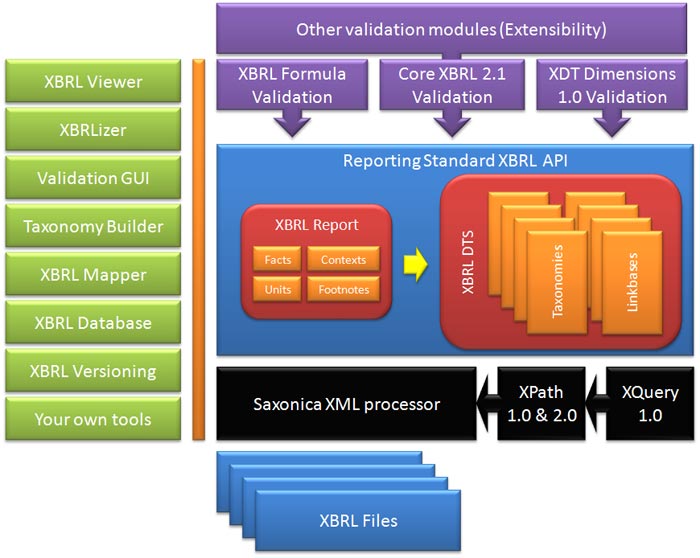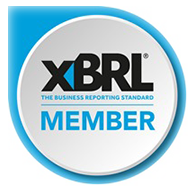The easiest way to incorporate XBRL functionality to your products is using Reporting Standards’ XBRL API. The API isolates all XBRL complexity and offers a friendly interface to developers that requires integrating XBRL functionality to their products.
The XBRL 2.1 API allows you to use all power of XBRL using a simple object model that has been created to access to all properties of elements defined in the XBRL Infoset.
 |
The API is available in JAVA and .NET both platforms share the same documentation, the same hierarchy of classes and the same source code.
Follow this link on the WIKI if you are interested in learning about how to start using Reporting Standard API in Java and .NET most common IDEs
You can access online to the documentation of Reporting Standards’ XBRL API. You may start exploring the DTSContainer object and the load methods. Those methods allows you to load the DTS content starting at any XBRL Report, XBRL Taxonomy or XBRL Linkbase. Once the DTS is loaded you may wish to perform XBRL Validation using a core XBRL processor XBRLCoreProcessor or you may perform validation against the Dimensions Specification 1.0 using a XDTProcessor. Both processors are able to build a Validation Report XBRLValidationReport that you application can use for any purpose you may be interested in. That report contains all XBRL Validation Exceptions and all XBRL Calculation Inconsistencies according to the content of Calculation Linkbases.
On the downloads page you can access to sample source code in Java where there are simple demonstrations about how to start using the API.
The API is available as a set of .jar (Java) binary files.
Under certain conditions, access to the source code may be permitted. Contact us for more information.




